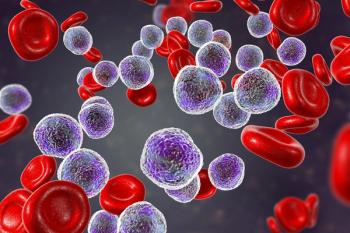
Primary Ovarian Insufficiency May Increase Breast, Reproductive Cancer Risk
Findings from a population-based study suggest patients with POI may need genetic counseling regarding future risk of reproductive cancers.
Patients with primary ovarian insufficiency (POI), defined as primary hypogonadism before turning 40 years old, may be at a greater risk for reproductive cancers, including breast, according to findings from a case-control population-based study published in The Journal of Clinical Endocrinology and Metabolism.
Data from the study showed a statistically significant increase in breast cancer prevalence in those with POI (relative risk [RR], 2.20; 95% CI, 1.30-3.47; P = .0023), as well as nominal increases in both ovarian (RR, 3.67; 95% CI, 1.00-10.71; P = .050) and uterine cancer (RR, 1.40; 95% CI, 0.17-5.07; P = .66). Increases were observed in breast (RR, 1.28; 95% CI, 1.06-1.52; P = .0078) and colon (RR, 1.50; 95% CI, 1.14-1.94; P = .0036) cancers in second-degree relatives of probands with POI. Furthermore, first- (RR, 1.64; 95% CI, 1.18-2.23; P = .0026), second- (RR, 1.54; 95% CI, 1.32-1.79; P < .001), and third-degree relatives (RR, 1.33; 95% CI, 1.20-1.48; P < .001) had increases in prostate cancer risk.
“We demonstrate an increase in breast cancer risk compared [with] population rates in [patients] with POI. There was also a borderline increased risk of ovarian cancer in [patients] with POI and early menopause. A subset of the [patients] with available DNA carried rare gene variants associated with both POI and cancer risk,” wrote lead author Kristina Allen-Brady, MD, MSPH, MPT, research assistant professor of the Division of Genetic Epidemiology at the University of Utah School of Medicine, with study coinvestigators in the publication. “These findings suggest common risk for POI and reproductive or hormonally sensitive cancers.”
Patients 40 years or younger with POI were identified from 1995 to 2022 at the University of Utah Health and Intermountain Healthcare using electronic medical records for inclusion in the retrospective study (n = 613). An expanded sample also included those with early menopause between 40 and 45 years with the same eligibility criteria as for POI (n = 778). The initial list of identified cases was identified through medical or reproductive endocrinologist individual chart review.
The Utah Population Database (UPDB) was used to link information from genealogic records with medical records and Utah Cancer Registry data. For familiality analysis, probands were required to have 3 or more generations of genealogy information available. Cancer diagnoses were identified using the linking between the UPDB and the Utah Cancer Registry.
The median patient age at POI diagnosis was 32.7 ± 7.4 years (range, 12-40) and 48.3 ± 11.8 years (range, 19-93) at the time of the study. Of the total population, 416 had genealogical data available in the UPDB; among this subset, the age was 47.3 ± 11.9 years. Altogether, there were 2405, 6798, and 17,666 first-, second-, and third-degree relatives.
An increased risk of breast cancer in probands was observed (n = 18). Median age for POI and breast cancer diagnosis was 36.5 ± 4.3 and 59.5 ± 12.7 years (range, 43-80), respectively. Of the 13 patients with breast cancer and pathology data, 93% were invasive ductal, 77% were estrogen receptor–positive, 54% were progesterone receptor-positive, and 17% were HER2-positive. Genetic testing found no identifiable pathogenic mutations.
Breast cancer risk remained significant with the addition of those with early menopause (n = 165) to the analysis set (OR, 1.89; 95% CI, 1.20-2.84; P = .0056); ovarian cancer was nominally significant (OR, 3.38; 95% CI, 1.15-8.65; P = .032).
There were 27 high-risk POI pedigrees observed for reproductive cancer diagnoses. Of note, 2 demonstrated an excess of both breast and prostate cancer, 1 had an excess of ovary and prostate cancer, and 1 had an excess of colorectal and prostate cancer.
Reference
Allen-Brady K, Moore B, Verrilli LE, et al. Breast cancer is increased in women with primary ovarian insufficiency. J Clin Endocrinol Metab. 2024;dgae480. doi:10.1210/clinem/dgae480
Newsletter
Stay up to date on recent advances in the multidisciplinary approach to cancer.


















































































